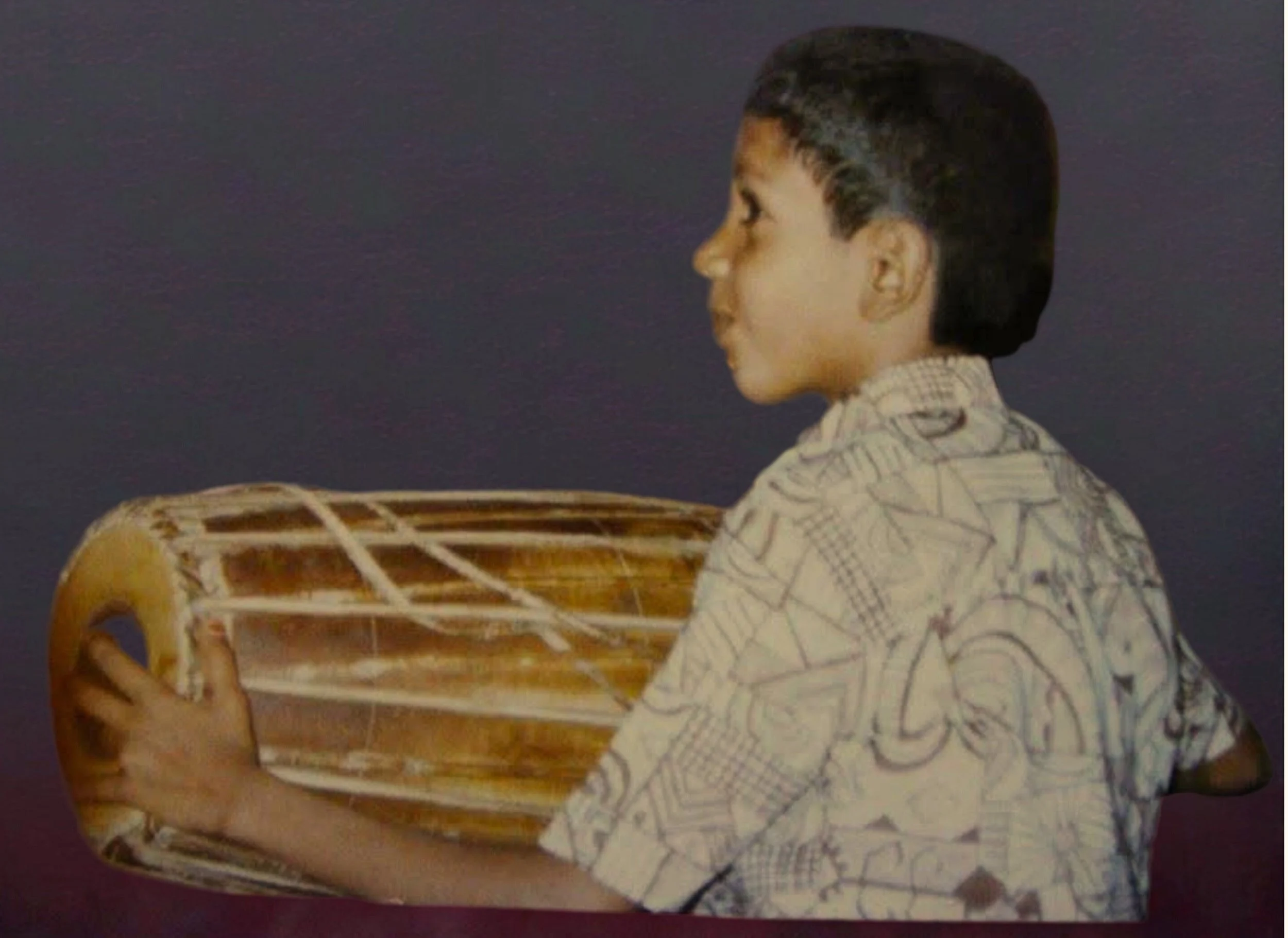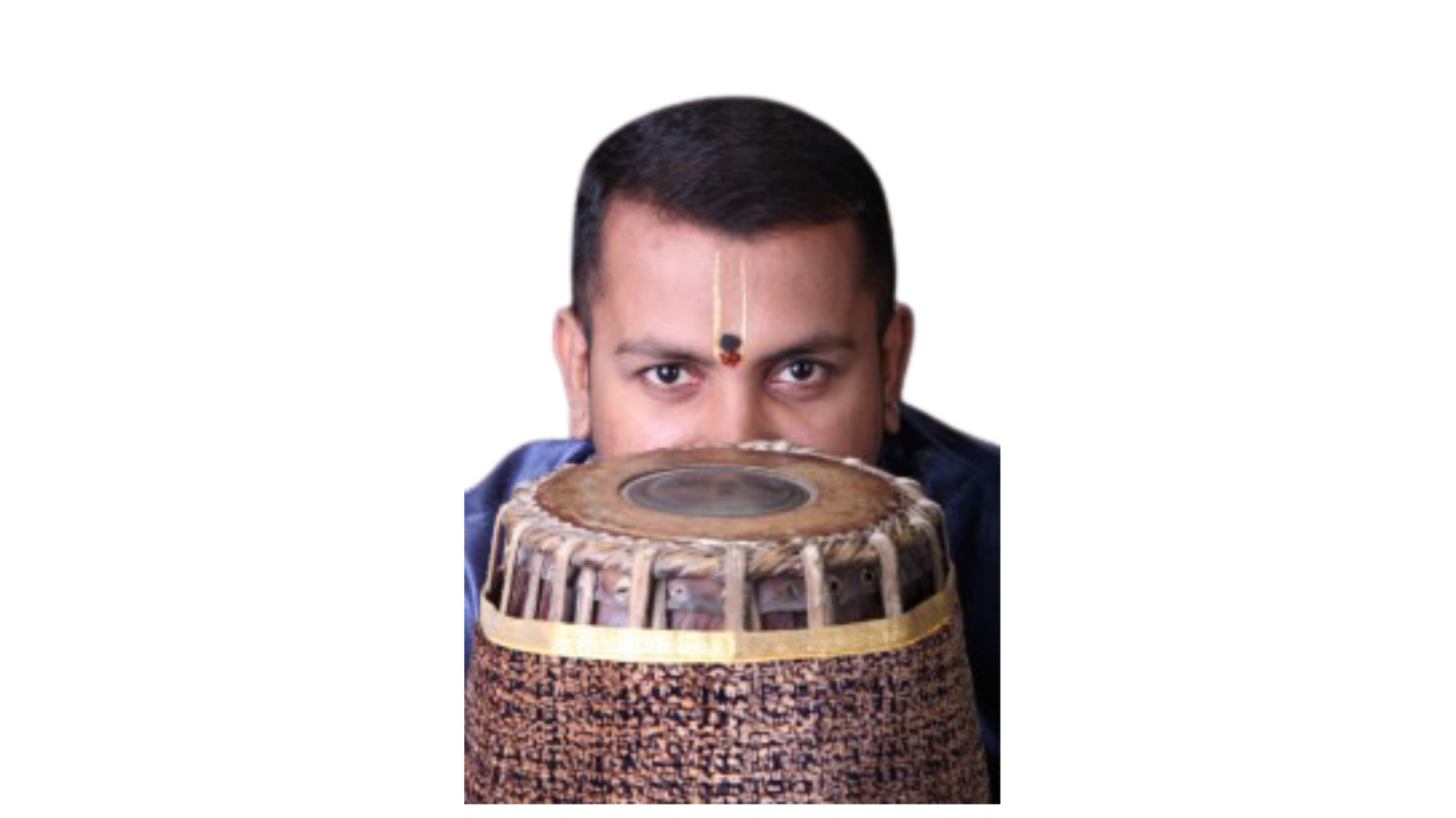Tutelage:
The Journey of a Disciple's Heartbeat
Sankaranarayanan's musical journey began at the tender age of three, under the guiding hands of Vidwan Kumbakonam Sri Ganesan, who introduced him to the foundational lessons of the Mridangam. His initiation into this divine art form continued under the mentorship of his father’s younger brother, Vidwan Papanasam Sri R. Kumar, who took him and his elder brother, Sri Shiva Ramani alias Murali, under his wing. This early immersion sowed the seeds of discipline, dedication, and devotion to the art of rhythm.
As Sankaranarayanan's talent blossomed, he was fortunate to receive profound guidance from Vidwan Melattur Sri L. Balasubramaniam, a stalwart who imparted invaluable training in both the Pudukkottai and Thanjavur traditions. The teachings of Vidwan Pammal Sri Krishnamurthy, though brief, added a unique dimension to his growing understanding of the art.
Throughout these formative years, Sankaranarayanan’s father, with unwavering dedication, took him to numerous concerts, offering him the opportunity to listen, absorb, and observe how legendary mridangam artists accompanied the vocal renditions. One particular concert at the Pammal Sangeetha Sabha etched itself into his memory forever. The performance by Padma Bhushan Sri T. V. Sankaranarayanan, accompanied by the legendary Mridangam maestro Srimushnam Sri V. Rajarao sir, was an experience that transcended mere listening. Young Sankaranarayanan, seated in the audience, instinctively began tapping his fingers rhythmically on his thigh, a spontaneous reflection of the music's resonance within him. Noticing this, Sri Rajarao Sir, with the foresight of a true guru, suggested to Sankaranarayanan’s father that they move to Chennai—a city that would offer the boy an environment of growth and opportunities to refine his skills.
As destiny would have it, shortly thereafter, Sankaranarayanan was seen accompanying his father during a Nama Sankeerthanam at the home of Kavignar Sri Narayanan in T Nagar, on the auspicious occasion of Saraswathi Pooja. His innate understanding of rhythm was already evident in his performance on the Mridangam and Dolki. It was then that Sri Rajarao Sir, impressed by his natural talent and dedication, took Sankaranarayanan under his tutelage, beginning the very next day—the auspicious Vijayadasami. However, there was a condition: Sankaranarayanan had to cease playing the dolki, so as to fully focus on his Mridangam lessons.
Sri Rajarao Sir set a firm goal for the young boy: a year of rigorous training to elevate his playing to the highest standards of concert performance. True to his guru’s vision, within that year, Sankaranarayanan began accompanying some of the greatest musicians of the time—such as Sethalapathy Sri Balasubramanian, Trichy Sri Ganesan, and Karur Sri Krishnamurthy—at the age of just nine.
Four years later, Sankaranarayanan and his family moved to Chennai, where he continued his learning in the traditional gurukula style under Sri Rajarao Sir’s direct guidance, absorbing every nuance of the art with an open heart and mind.
Sankaranarayanan considers himself incredibly fortunate to have received such profound training from his revered gurus. Their teachings have shaped his life and career, and he continues his journey of musical growth with a deep sense of gratitude and reverence. His commitment to Naada Layam—the rhythm of the soul—remains unwavering as he consistently strives to deepen his mastery, always with joy, humility, and dedication. For him, the pursuit of excellence is not merely about technique but about embracing the art form in its entirety, constantly evolving, and sharing his experiences with others.
In his own words, Sankaranarayanan believes that mastery in any art form is not a mere destination, but an ongoing journey. “It is the spark of passion, the fire of regular practice, and the discipline of learning that lead one to mastery,” he asserts. “There are no shortcuts on this path, only dedication and hard work.”
He credits all his achievements to the divine blessings of his parents, his beloved Alamelu Athai Paati, the guidance of his gurus, and the wisdom imparted by the great masters of music. With every passing moment, his thirst for knowledge and his relentless practice amplify, strengthening his connection with the divine forces that guide his path. For Sankaranarayanan, the journey of mastering the mridangam is as much a spiritual odyssey as it is an artistic one, and he feels truly blessed by the higher energies that illuminate his way.





